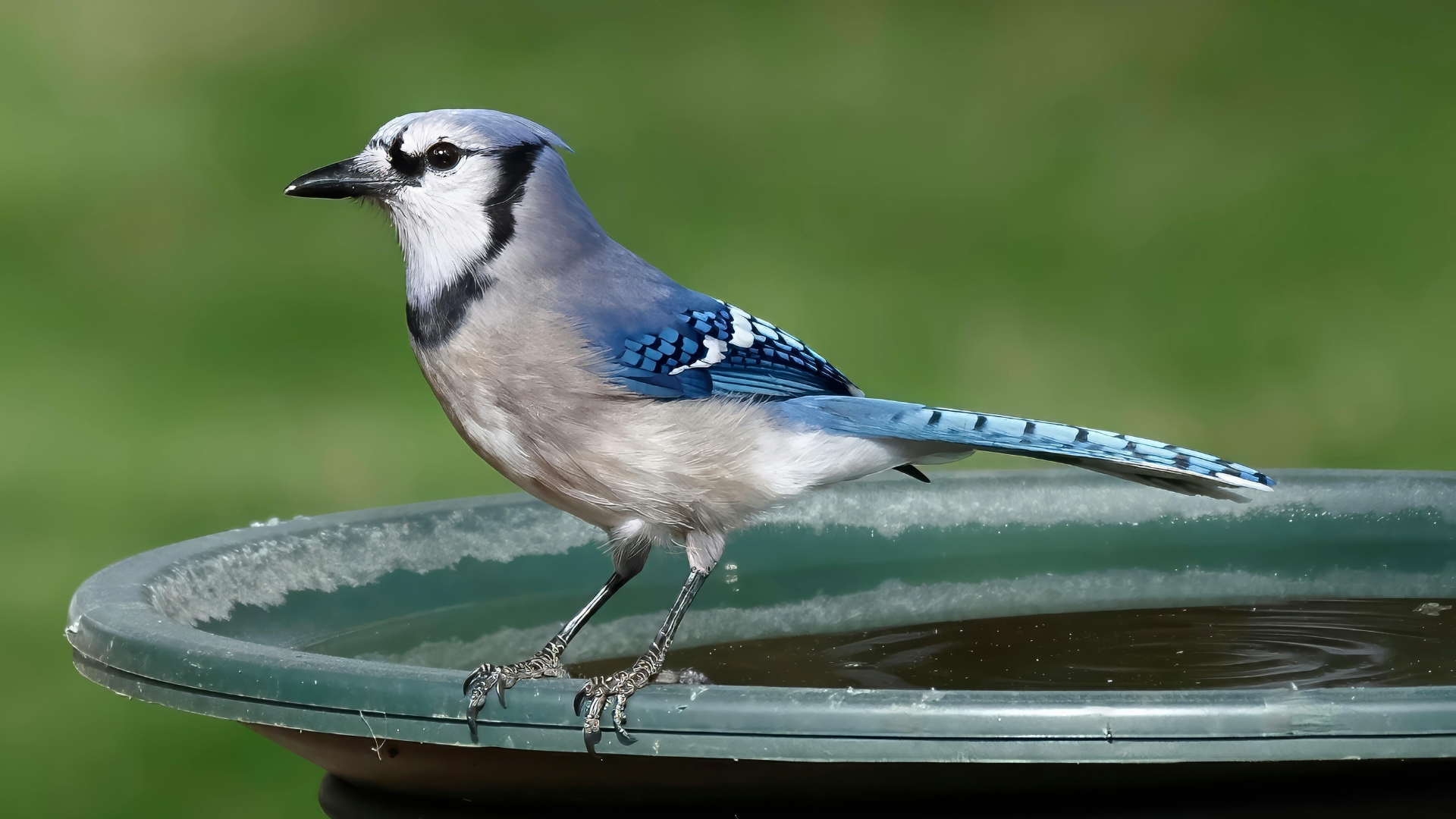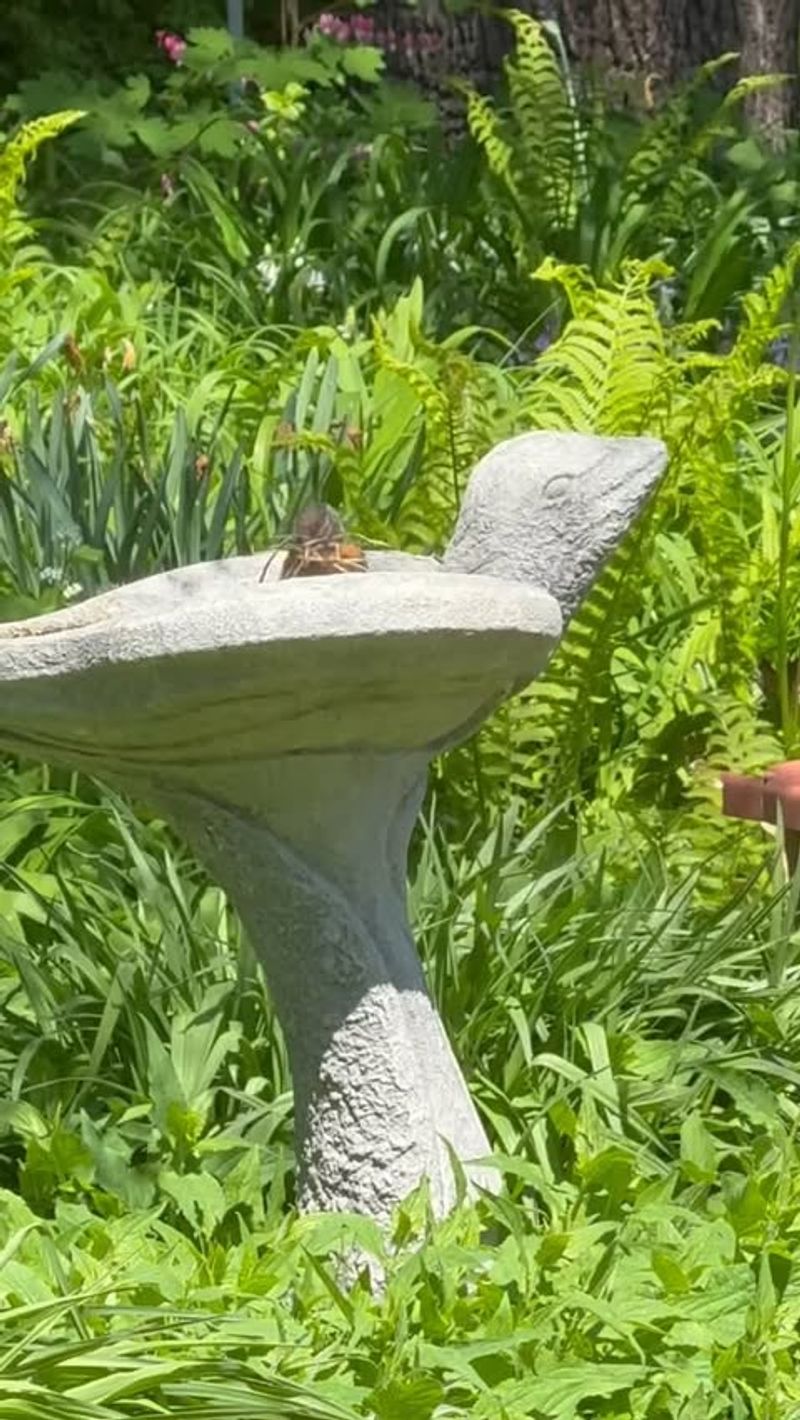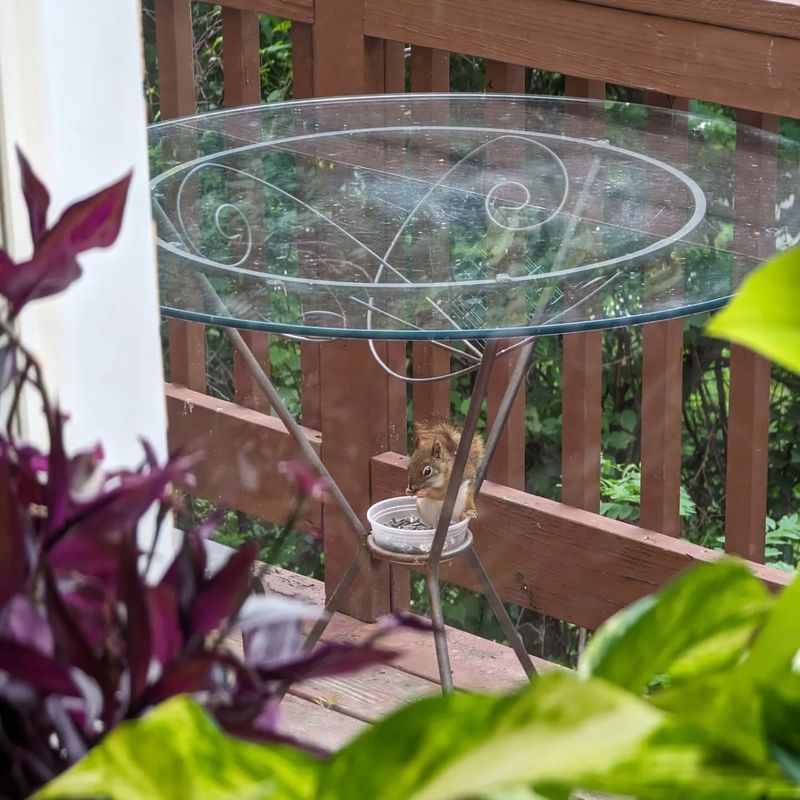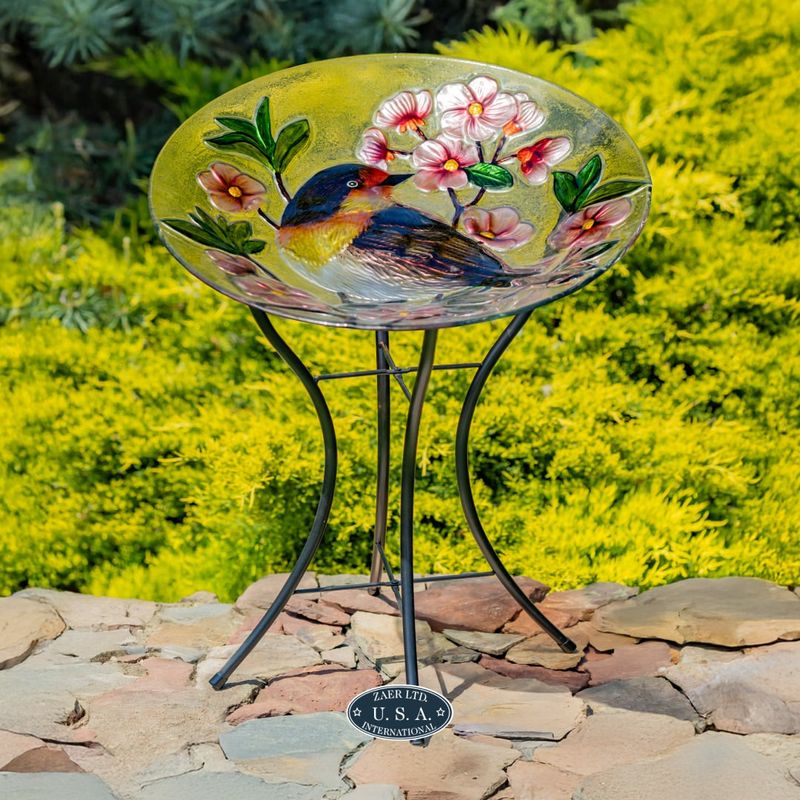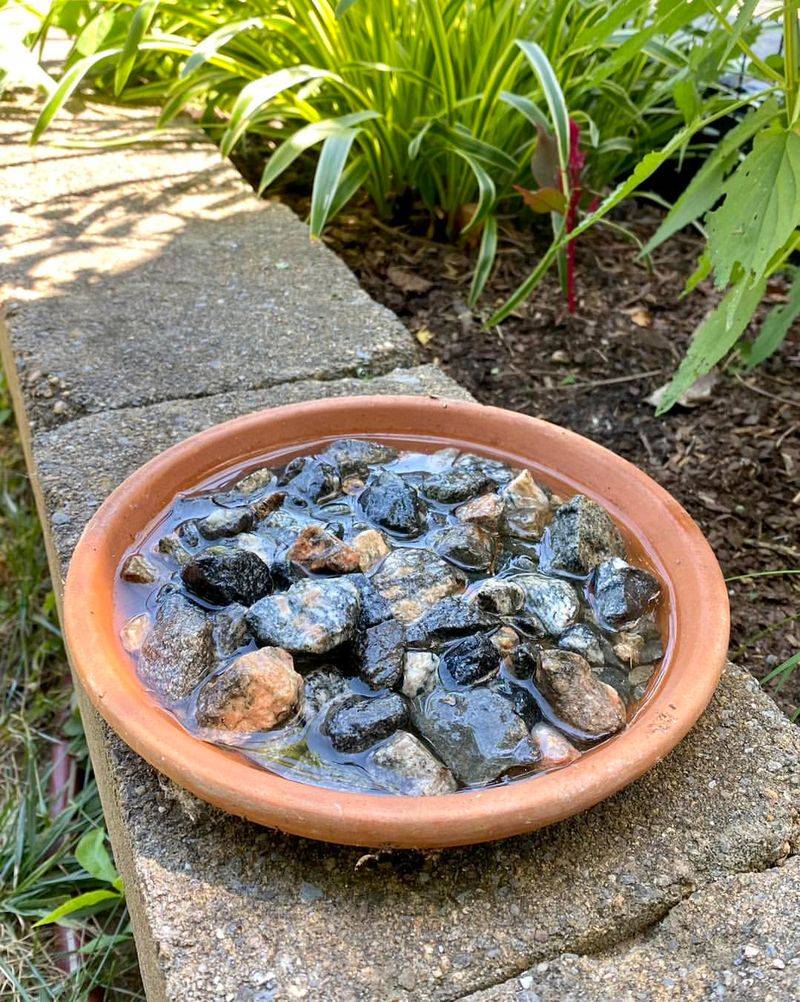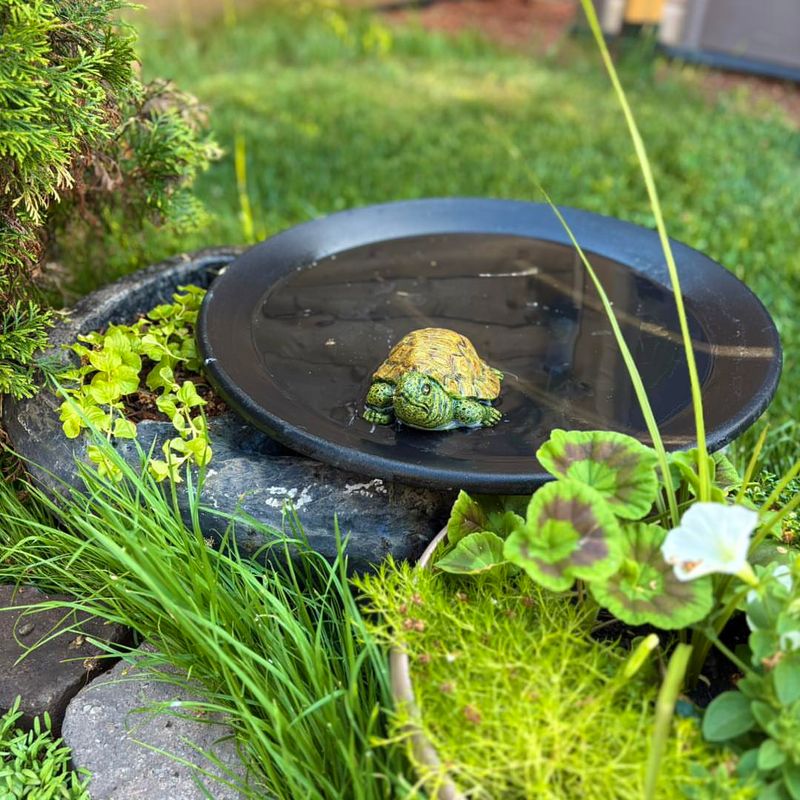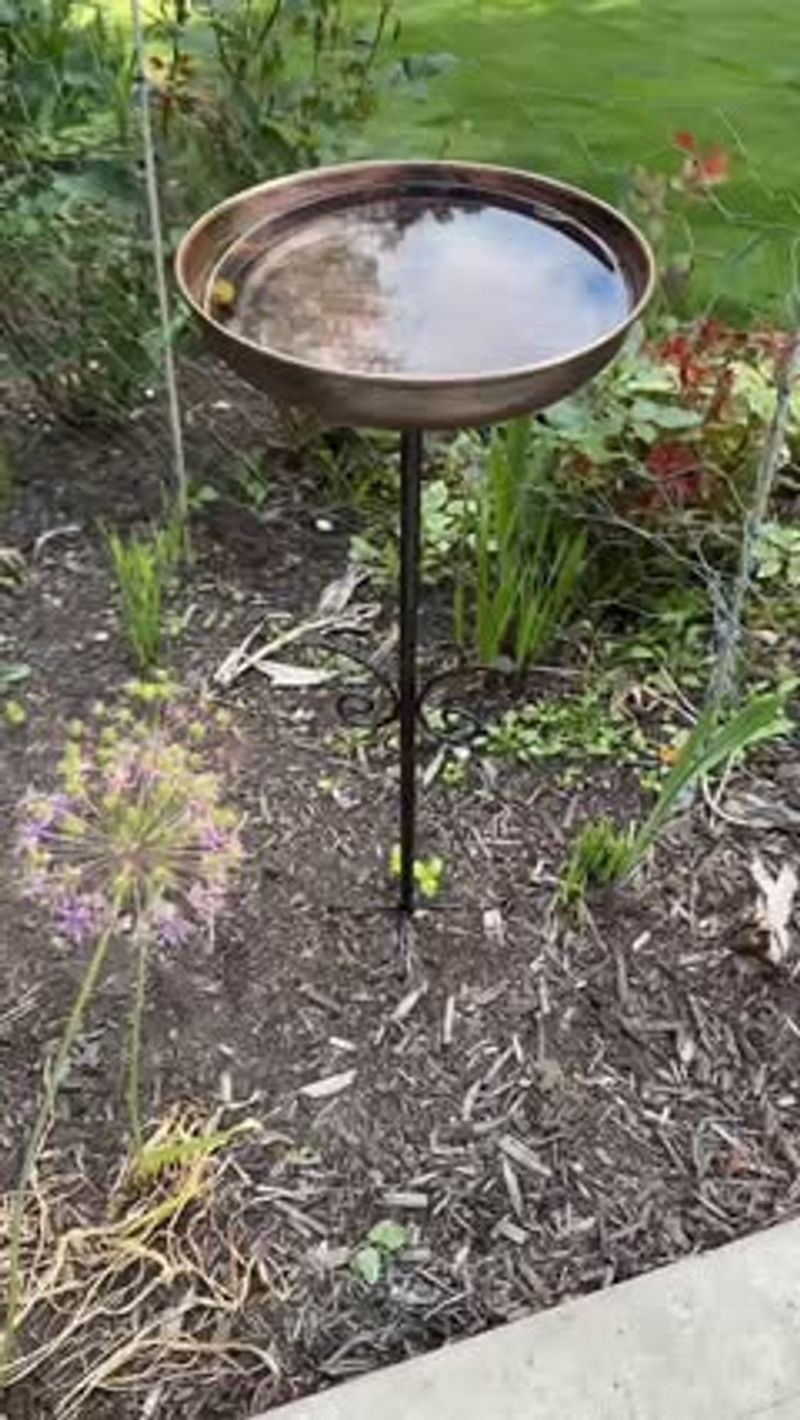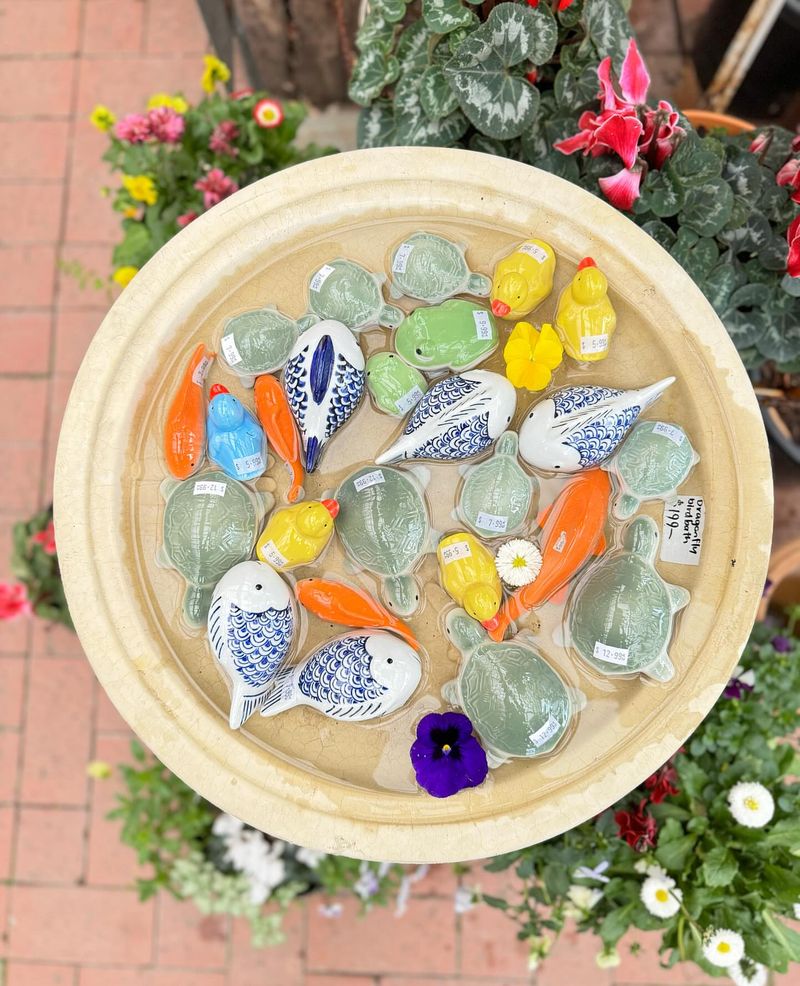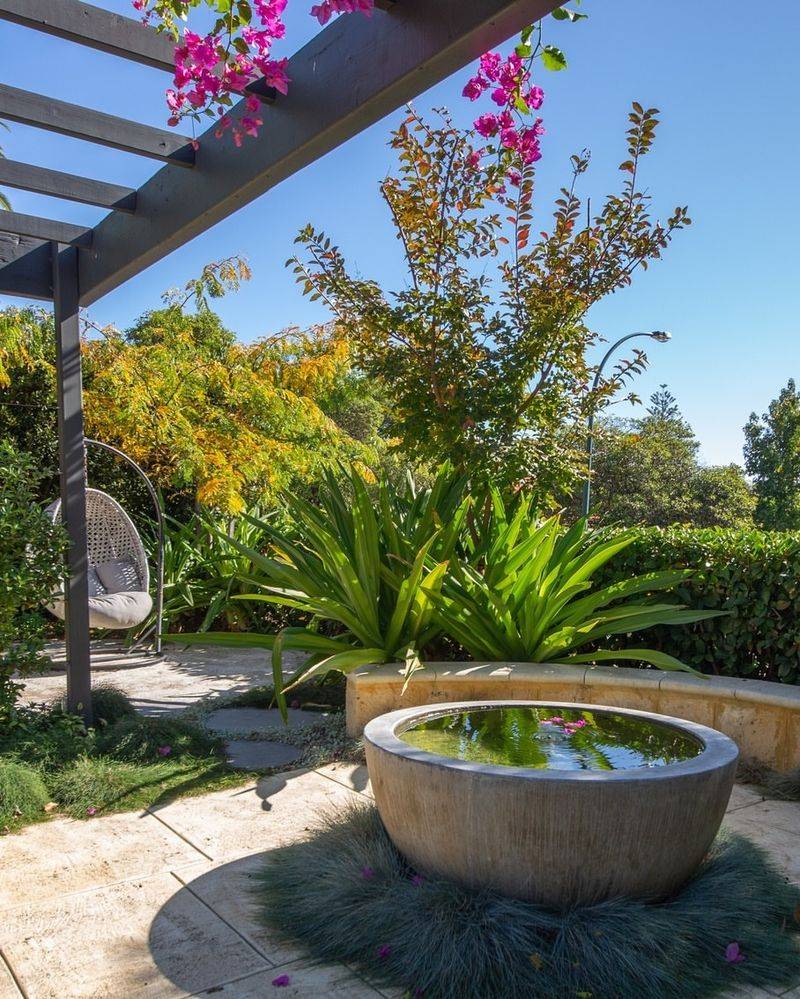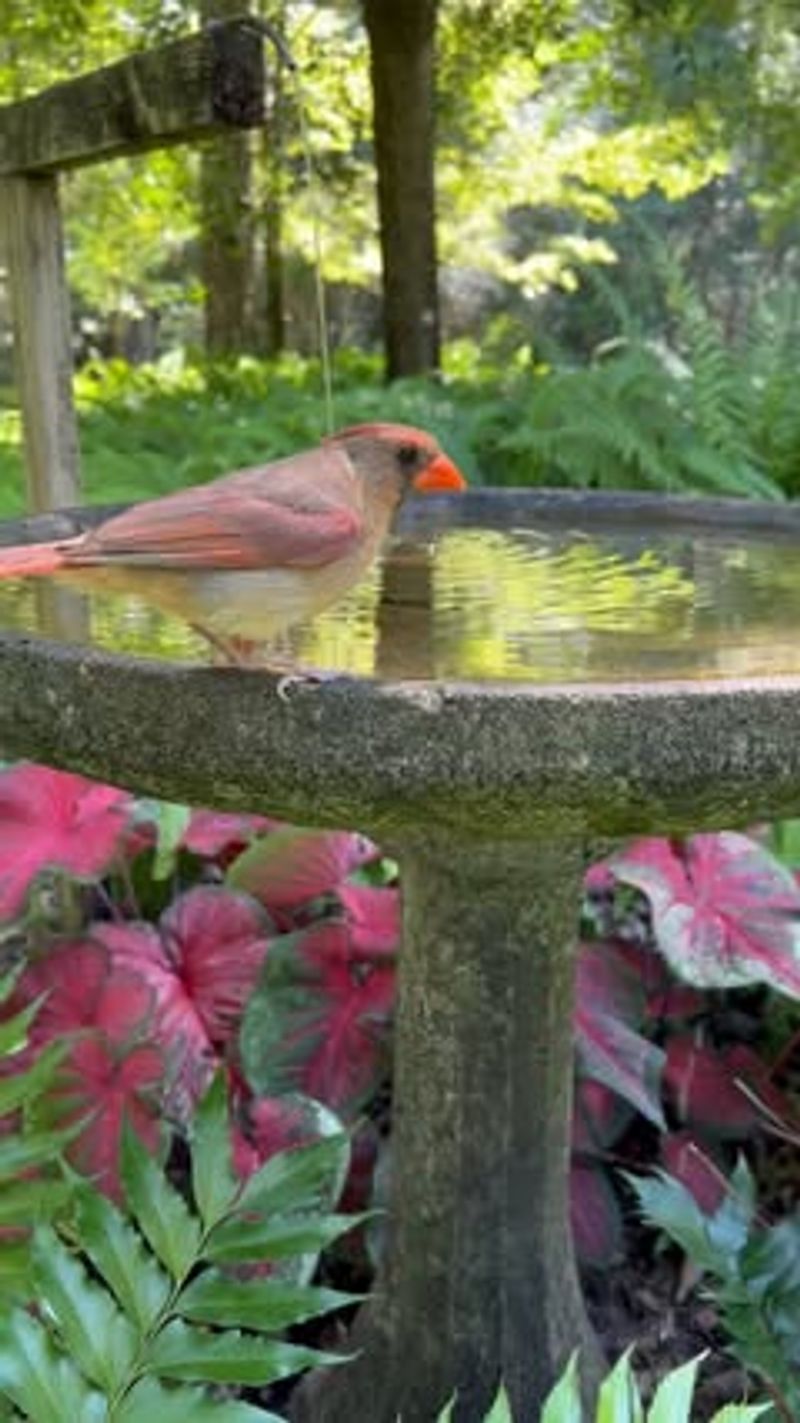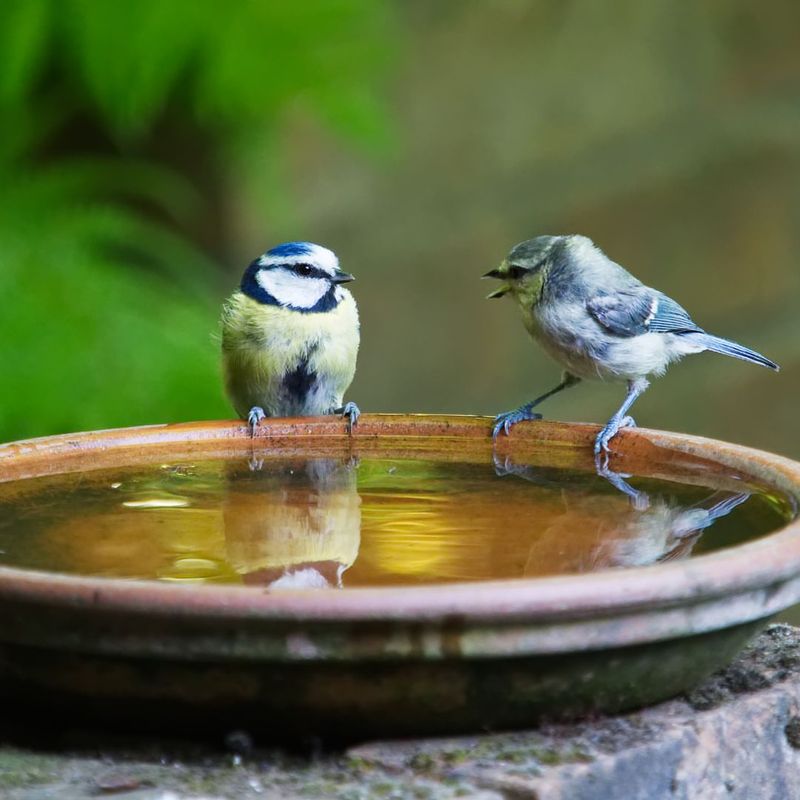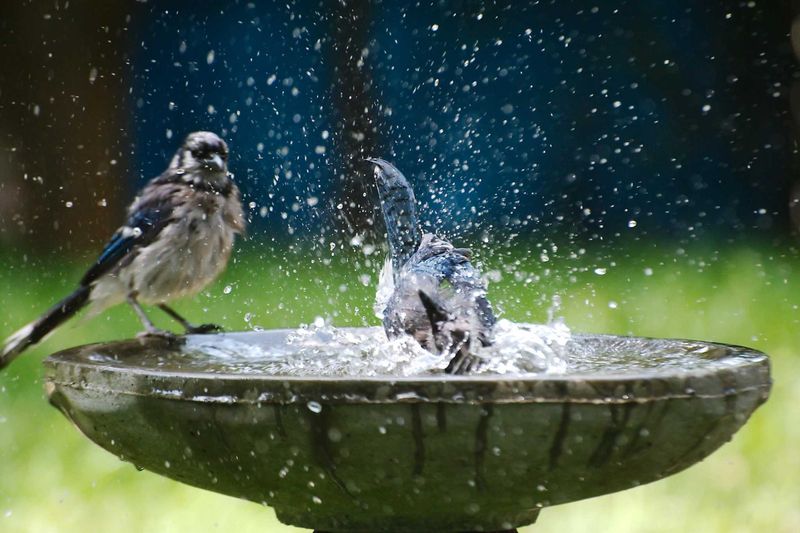One forgotten tomato cage. One weekend. That’s all it takes to create a birdbath that looks custom-made and garden-magazine worthy.
This simple DIY turns scrap into statement—no power tools, plumbing, or pricey parts required. Just style, simplicity, and a splash of charm.
1. Gather Your Materials
Successful projects start with proper preparation! Round up a tomato cage, a shallow plastic or ceramic dish (about 2 inches deep), decorative stones, outdoor paint, zip ties, wire cutters, and waterproof sealant.
Look around your garage first—you might already have most of these items. The dish should be wide enough for birds to bathe comfortably but not so deep that they risk drowning.
Colorful glass beads, marbles, or mosaic pieces make excellent optional decorations if you want to get extra creative with your design.
2. Flip That Cage
Turn your tomato cage upside down so the wider opening faces the ground. This creates a stable base for your birdbath while the narrower end points skyward to support your water dish.
Most tomato cages have three or four legs that will now serve as your birdbath’s foundation. If the legs aren’t even, don’t worry—we’ll fix that in a later step.
The cage’s circular rings provide perfect platforms for decorations and perches where birds can rest before taking a dip.
3. Paint With Personality
Unleash your inner artist! Apply outdoor-safe paint to your tomato cage in colors that complement your garden. Blues, greens, or earth tones blend naturally, while bright colors add a fun pop!
Spray paint works wonderfully for even coverage, but hand-painting allows for more detailed designs. Consider painting each ring a different color for a rainbow effect that will shimmer in the sunlight.
Allow the paint to dry completely—usually 24 hours—before moving on to prevent smudges or fingerprints.
4. Level The Landing
Birds appreciate a stable bathing spot! Check if your upside-down cage sits evenly by placing it on flat ground. If it wobbles, bend the legs gently until they’re level.
For extra stability, push the legs slightly into soft soil or add small rocks around the base. Some crafters even create concrete footings by pressing the legs into quick-dry cement.
Remember that birds will be landing on this structure, so stability matters more than perfect symmetry. A wobbly birdbath won’t attract many feathered friends!
5. Create A Perch Paradise
Birds love landing spots! Wrap colorful twine around several cage rings to create comfortable perches where birds can rest before splashing in. Mix textures by adding small branches secured with zip ties.
Position perches at different heights to accommodate various bird sizes. Smaller songbirds prefer higher perches while larger birds might use lower ones.
Leave some open space between perches so birds can easily fly in and out. The natural look of twine and branches helps your creation blend beautifully with the garden environment.
6. Secure Your Splash Zone
Position your shallow dish on top of the cage’s narrower end. Use strong zip ties or coated wire to attach it securely through drainage holes or around the dish’s rim.
Make sure the dish sits level to prevent water from spilling out one side. If your dish doesn’t have built-in drainage holes, add small ones near the top edge to prevent overflow during rainstorms.
Double-check that your attachments are weatherproof and tight. Birds may perch on the edge, so the dish should be stable enough to handle their weight without tipping.
7. Add Decorative Stones
Pour clean, smooth stones into your dish, creating varying depths while leaving some water visible. Polished river rocks work beautifully and come in gorgeous natural colors that birds find attractive.
The stones serve multiple purposes—they give birds secure footing while bathing, prevent small birds from drowning in deeper water, and help keep the water cooler on hot days.
Arrange larger stones around the edges and smaller ones in the center. This natural gradient allows birds of different sizes to find their perfect bathing depth.
8. Enhance With Garden Elements
Weave artificial vines or real climbing plants through the cage rings for a lush, natural look. Morning glories, clematis, or ivy work wonderfully if you prefer living decorations.
Attach small garden ornaments like butterflies, dragonflies, or miniature fairy garden items to add whimsical charm. Solar-powered mini lights wrapped around the structure create magical evening ambiance.
Consider your garden’s existing style when choosing enhancements. A cottage garden might call for flowers, while a modern space might look better with clean geometric decorations.
9. Position For Bird-Watching Joy
Location matters! Place your birdbath where you can easily view it from a window but away from areas where predators might hide. Birds prefer bathing spots with nearby trees or shrubs for quick escapes.
Morning sun with afternoon shade creates the ideal microclimate. Too much direct sun heats the water and promotes algae growth, while complete shade might make birds feel vulnerable.
Keep it at least 10 feet from bird feeders to prevent seeds from contaminating the water. This separation creates different activity zones in your yard for maximum bird enjoyment.
10. Maintain Fresh Water
Fresh water attracts more birds! Change the water every 2-3 days to prevent mosquito breeding and algae growth. During hot summer days, daily refreshing might be necessary.
Use a small brush to gently clean the stones and dish surface weekly. Avoid chemical cleaners—a solution of one part vinegar to nine parts water works perfectly for deeper cleaning.
During winter in mild climates, a birdbath heater keeps the water from freezing, providing a rare drinking spot for winter birds. Just make sure any electrical cords are properly protected from the elements.
11. Watch Your Feathered Friends Flock
Patience pays off! Birds may take a few days to discover your new creation. Place a few shiny objects nearby to catch their attention or try making a gentle dripping sound by hanging a water-filled container with a tiny hole above the bath.
Keep a bird identification guide handy to learn about your visitors. Many birders keep journals noting which species use their baths and when they appear throughout the seasons.
Morning and evening typically bring the most bird traffic as they perform their daily bathing rituals. Grab your camera—these moments make for delightful photos!

